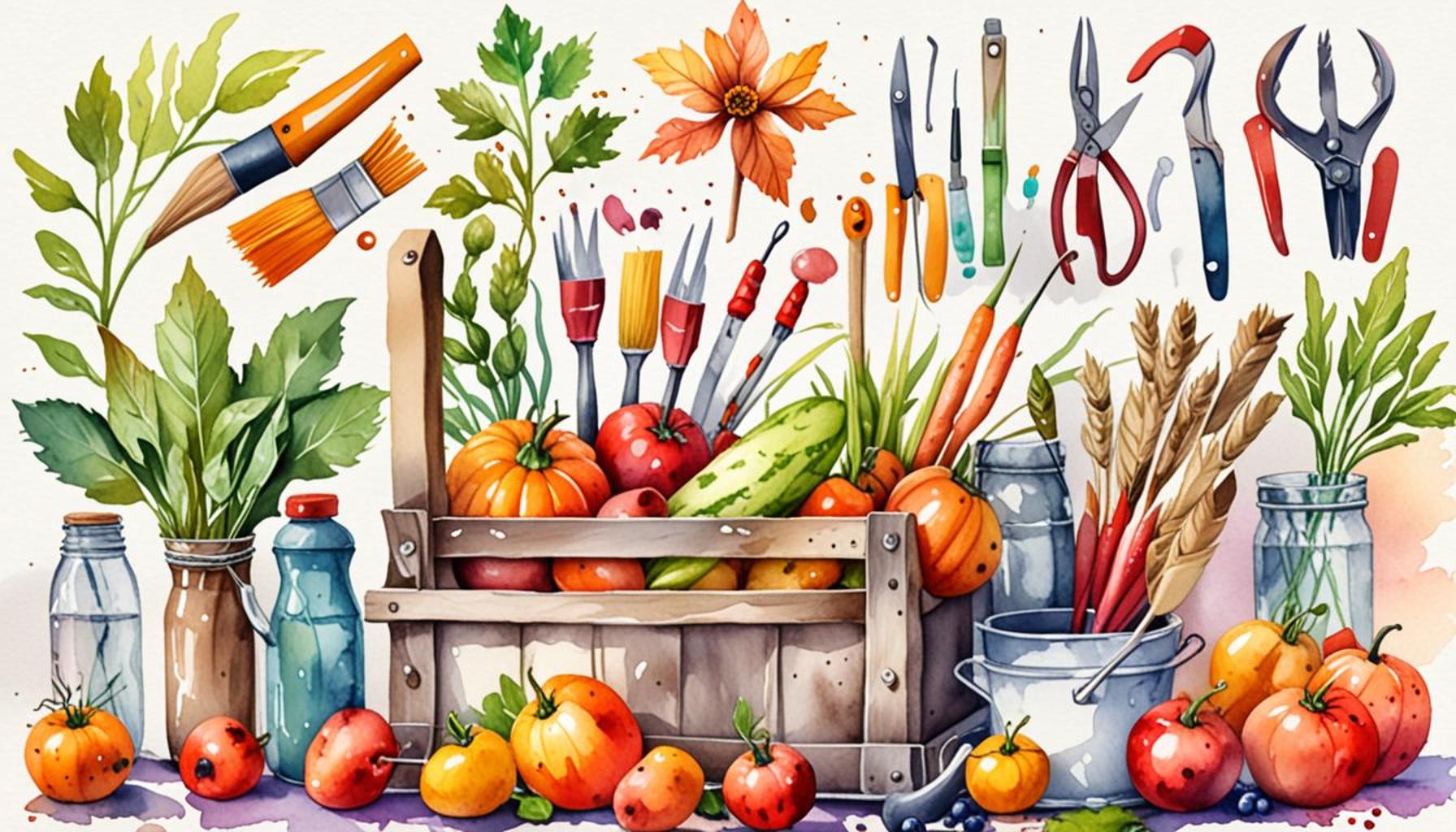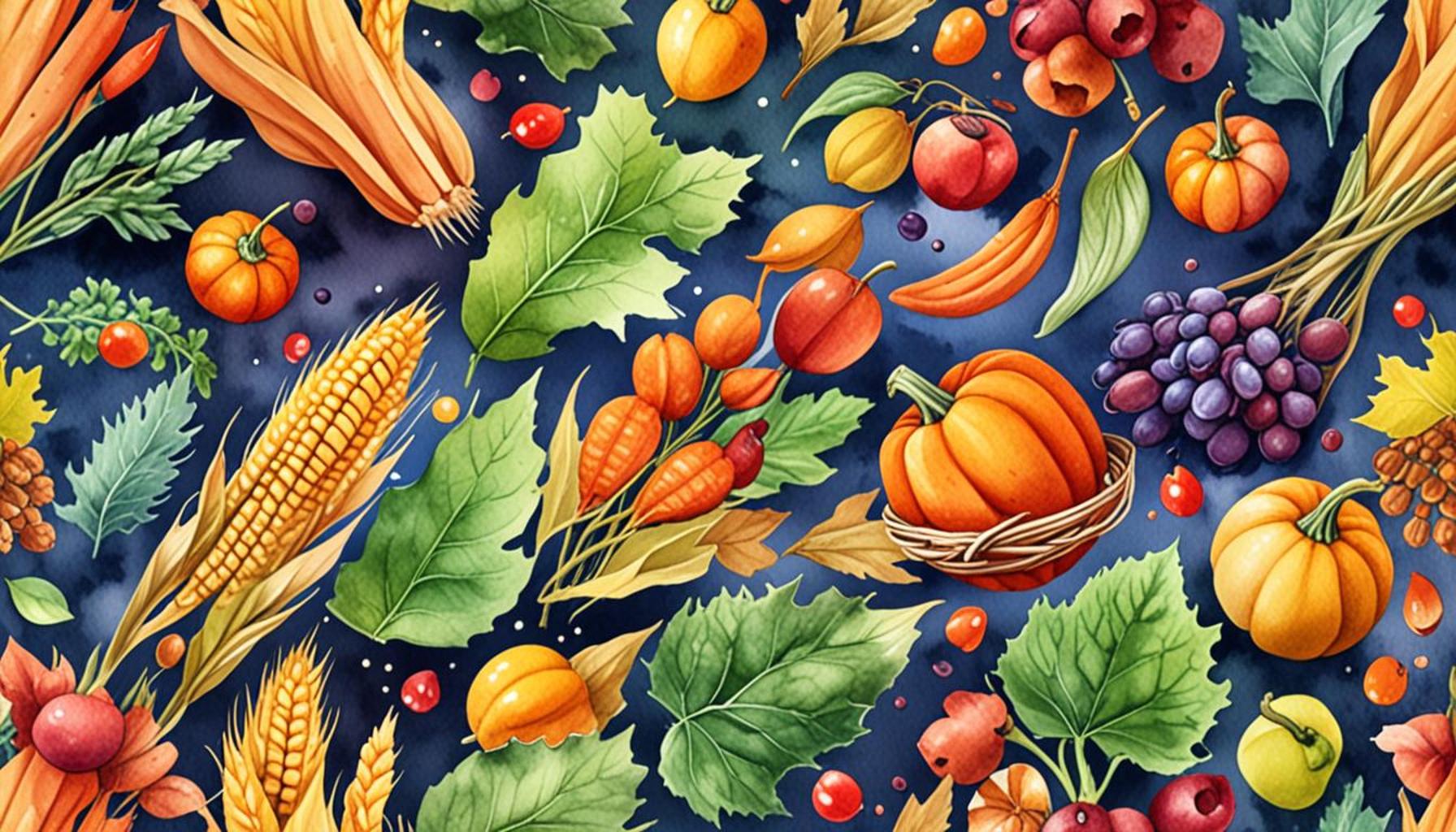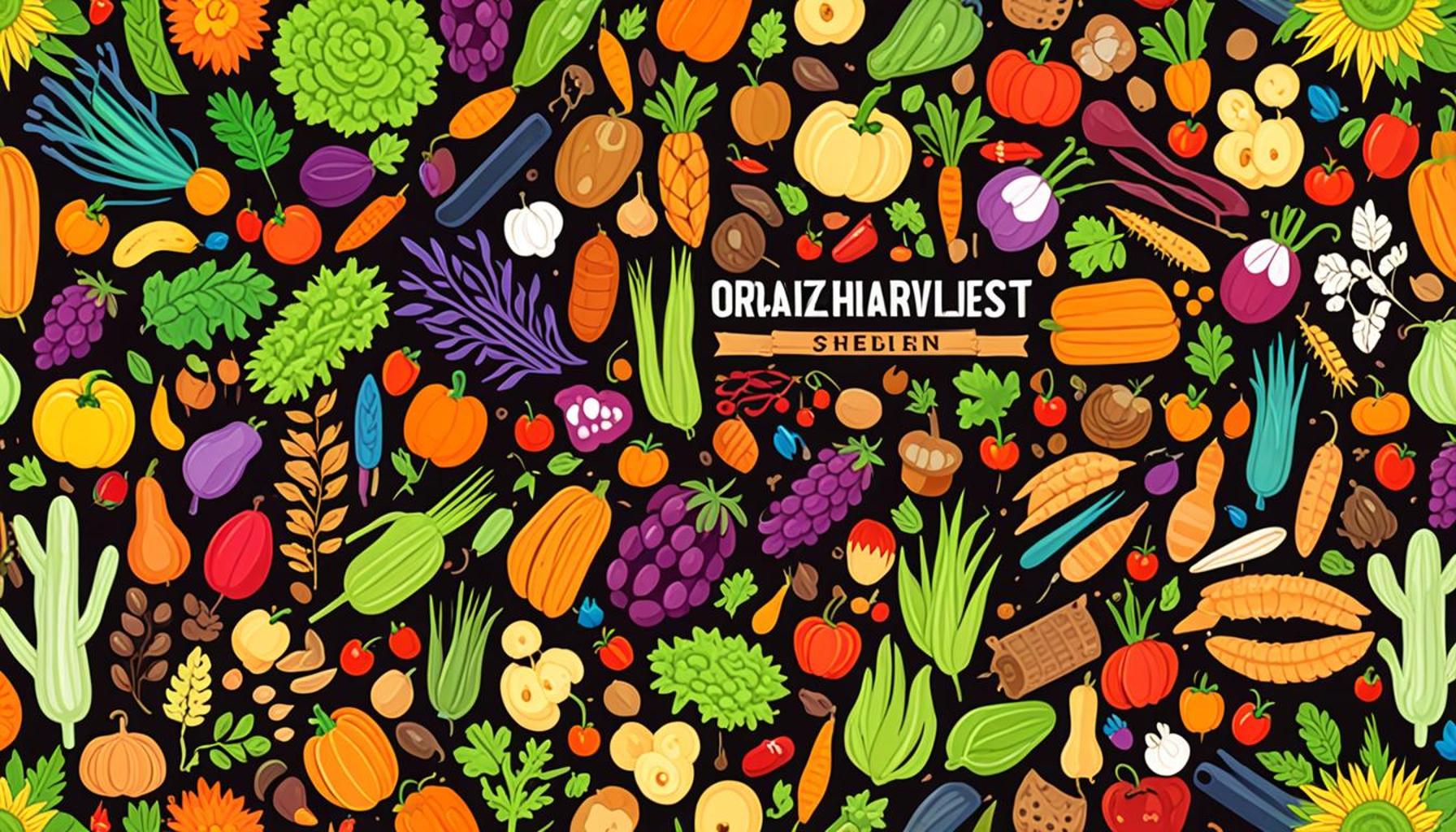Essential Tools for Harvesting: What You Need for an Efficient Harvest

Harvesting Essentials for a Bountiful Yield
As the harvest season approaches, it’s crucial to be equipped with the right tools to ensure an efficient harvest. Whether you’re a backyard gardener tending to a vegetable patch or a commercial farmer managing acres of crops, the quality and type of tools you utilize can significantly impact your productivity and overall success.
The right tools can streamline your harvest process, saving both time and labor. Understanding which tools to prioritize based on your specific needs can enhance your yield and simplify your labor. Below is a comprehensive breakdown of essential tools that every harvester should consider:
- Hand Tools: Tools such as shears, sickles, and trowels are invaluable for gathering produce quickly and accurately. For instance, a pair of high-quality pruning shears can make a world of difference when it comes to cutting herbs or vine crops, allowing for a clean cut that promotes healthy regrowth.
- Harvest Buckets: Sturdy containers are essential for transporting crops with ease while minimizing damage. Look for buckets that are both lightweight and durable, as they’ll be your go-to for collecting everything from tomatoes to apples, ensuring they remain intact and ready for market or kitchen use.
- Pruning Tools: Not only do pruning tools help in maintaining healthy plants, but they also ensure optimal growth leading up to harvesting. Regular maintenance, such as trimming back overgrowth on fruit bushes or deadheading flowering plants, can lead to a more fruitful harvest.
- Gloves and Protective Gear: Ensuring safety should always be a priority while handling sharp tools or heavy loads. Invest in a good pair of gardening gloves that provide cushioning and grip to protect your hands from cuts, blisters, and potential injuries.
In addition to basic hand tools, investing in advanced equipment can significantly elevate your harvest experience. Consider the following:
- Harvesting Carts: Perfect for transporting larger quantities of produce, these carts can be a lifesaver during bustling harvest days. Utilizing a wheeled cart minimizes strain on your body and increases efficiency as you move between rows or fields.
- Seeders and Planters: While not exclusively harvest tools, these machines can complement your efforts by ensuring a successful planting season that leads to a bountiful harvest the following year. A well-planned crop rotation and timely planting can enhance soil health and yield.
- Weather Monitoring Systems: Keeping track of environmental conditions is crucial in planning the perfect harvest time. Real-time data on temperature, humidity, and precipitation can guide when to start your harvest, improving both quality and efficiency. Many modern farmers are turning to tech solutions that provide alerts for optimum weather conditions, allowing them to make informed decisions about their harvest schedules.
By carefully selecting the appropriate tools tailored to your specific needs, you can significantly enhance your efficiency and truly enjoy the fruits of your labor. Moreover, with advancements in modern technology and tools, the harvest season can evolve into a smoother and more productive experience—one that celebrates the hard work put into nurturing crops throughout the growing season.
DIVE DEEPER: Click here for expert tips
The Right Hand Tools for Precision and Care
When it comes to harvesting, starting with the basics means investing in hand tools that can make a significant difference in the efficiency and quality of your yields. For smaller gardens, specialized tools often outperform larger equipment in effectiveness. Essential handheld items such as pruning shears, sickles, and trowels form the backbone of any efficient harvesting toolkit.
For example, a pair of high-quality pruning shears can enhance your harvesting experience. These tools can cut through stems and branches cleanly, promoting faster field work while preventing damage to the plant. Specifically designed for various tasks, such as cutting herbs, grapes, or leafy greens, selecting the right shears can allow for precision, thereby maximizing the quality of your harvest.
Furthermore, sickles are ideal for harvesting grains like wheat or barley. Their curved blades support swift and smooth cutting motions, allowing the harvester to efficiently reap a larger amount of grain compared to traditional hand methods. Meanwhile, trowels excel in uprooting smaller plants or digging up root crops like carrots or potatoes, ensuring they are collected without bruising or damaging their delicate structures.
Efficient Transport with Harvest Buckets
No harvesting operation is complete without harvest buckets. These sturdy containers are indispensable for transporting fresh produce from the field to your storage or market stall while minimizing accidental bruising or spillage. You should opt for buckets that are lightweight, durable, and preferably designed with ergonomic handles to ease carrying during long days in the fields.
In addition, using carrying bags made from breathable fabric can reduce moisture buildup, which is critical in preserving the longevity of perishable items like fruits and vegetables. These bags come in various sizes and are especially beneficial for home gardeners or smaller-scale harvests, allowing for easy organization and transportation of different crops.
Safety and Maintenance Essentials
Alongside your harvesting tools, it’s essential to prioritize safety gear. Investing in a good pair of gardening gloves will protect your hands from cuts, blisters, and exposure to thorns or prickly plants. Gloves with a firm grip also provide added control while using sharp tools, thus enhancing your overall efficiency. In colder harvest seasons, consider insulated gloves to keep your hands warm without compromising dexterity.
Moreover, having protective eyewear is highly beneficial when handling equipment that produces debris or while working with spiky vegetation. Taking preventive measures against potential injuries not only ensures your safety but also enhances productivity by keeping distractions and interruptions to a minimum.
All things considered, ensuring you have the right mix of basic hand tools and safety gear can set the foundation for an efficient harvest. From hand tools for precise work to proper storage and transport containers, each element contributes to maximizing your efforts and elevating your harvesting experience.
| Category | Advantages |
|---|---|
| Hand Tools | Hand tools, such as pruners and scythes, are crucial for precision in harvesting. They allow control, reduce damage to plants, and improve efficiency. |
| Harvesting Machinery | Using machinery like combine harvesters accelerates the process of collecting crops, significantly enhancing productivity and reducing labor costs. |
| Storage Solutions | Investing in proper storage systems helps maintain the quality of harvested goods, extending their shelf life and reducing waste. |
| Safety Gear | Utilizing personal protective equipment ensures safety during harvesting operations, minimizing injury risks and promoting a safe working environment. |
Harvesting can often be a strenuous task. Thus, choosing the right tools not only enhances efficiency but also ensures quality yields. For more information on optimizing your harvest, consider delving into articles that discuss the latest advancements in agricultural technology and techniques.
LEARN MORE: Click here for essential tips
Harvesting Equipment for Large-Scale Operations
For larger gardens or farming operations, the landscape of tools expands significantly beyond hand-held implements. While hand tools are essential for small growers, larger-scale harvesting calls for specialized mechanical equipment that not only enhances efficiency but also significantly reduces labor costs and time. From tractors to combines, these machines are transformative in their ability to handle larger-scale harvests with precision.
One of the most versatile pieces of harvesting equipment is the tractor. Equipped with various attachments such as blades and seeders, tractors can facilitate an array of tasks, from tilling soil to transporting harvested crops. Many modern tractors are designed with various power outputs and connections to accommodate specific attachments, allowing for customization based on your particular farming needs. This adaptability ensures that your tractor can grow alongside your agricultural endeavors.
Combines are essential for those who harvest grains, corn, and other large-scale crops. These sophisticated machines can cut, thresh, and clean grain in a single pass, making them invaluable for efficiency. With advanced features such as GPS technology, operators can navigate fields with precision, using data to optimize harvesting patterns and thereby reducing waste. In the U.S., where agriculture plays a pivotal role in the economy, investing in a combine can lead to substantial gains in productivity and profitability.
Technology and Data Management Tools
The importance of technology in modern harvesting cannot be overstated, particularly with the rise of precision agriculture. Farmers are increasingly turning to data management tools that allow them to track crop health, yield forecasts, and pest issues. These systems often integrate with harvesting equipment, providing real-time insights that help optimize efficiency. Understanding soil conditions or predicting weather patterns can significantly impact the timing of the harvest, which is crucial for maximizing yield quality.
Many farms today utilize drones equipped with imaging technology to remotely monitor crop health. This innovative tool can effectively detect variations in plant vitality and irrigation issues, allowing farmers to make informed decisions before the harvest. Furthermore, soil sensors can provide data on moisture levels, enabling targeted irrigation that conserves water while simultaneously preparing crops for optimal harvest.
Storage and Preservation Solutions
Upon completion of the harvest, it is imperative to have proper storage solutions in place to maintain the quality of your produce. The right storage facilities can prevent spoilage, extend shelf life, and ultimately maximize profits. Cold storage units are particularly important for fruits and vegetables, as maintaining a controlled temperature is vital to prolonging freshness. Proper humidity control is also essential, especially for items like citrus fruits that can be sensitive to moisture levels.
For crops that are harvested in large quantities, utilizing bulk bins for temporary storage before transport can be effective. These bins help keep crops organized and protected from environmental stresses. Additionally, implementing packaging systems that cater to specific types of produce can streamline the post-harvest process, ensuring that items are prepped for market efficiently.
Overall, blending traditional harvesting tools with modern machinery and technology paves the way for a more efficient harvest. The investment in high-quality equipment and a well-structured harvesting plan will undoubtedly yield benefits that go beyond just the quantity of produce, enhancing quality and sustainability in the farming industry.
LEARN MORE: Click here for expert tips
Conclusion
In the dynamic world of agriculture, having the right tools for harvesting is crucial for ensuring a successful and efficient yield. From hand tools that cater to small-scale gardens to mechanical equipment for large-scale operations, each piece of equipment plays a vital role in optimizing the harvesting process. Innovations such as combines and tractors, equipped with the latest technology, drastically enhance productivity and reduce the time and labor involved in harvesting crops.
The integration of technology into harvesting practices, including drones for monitoring crop health and data management tools for analyzing soil conditions, represents a new frontier in efficiency and precision agriculture. These tools not only enable farmers to make informed decisions about timing and methods of harvesting but also help maximize the quality of the yield.
Finally, once the hard work of harvesting is complete, proper storage solutions become essential for maintaining the quality and profitability of crops. From cold storage units to efficient packaging systems, investing in these facilities can preserve freshness and prevent spoilage, ultimately enhancing market readiness.
As the agricultural landscape continues to evolve, staying informed about the latest advancements in harvesting tools and techniques is important. Farmers and gardeners alike are encouraged to explore and adopt innovations that will promote sustainability, quality, and efficiency in their operations. By doing so, they will not only optimize their harvests but also contribute to the broader goals of food security and economic viability in the agricultural sector.


